Aloo Poha
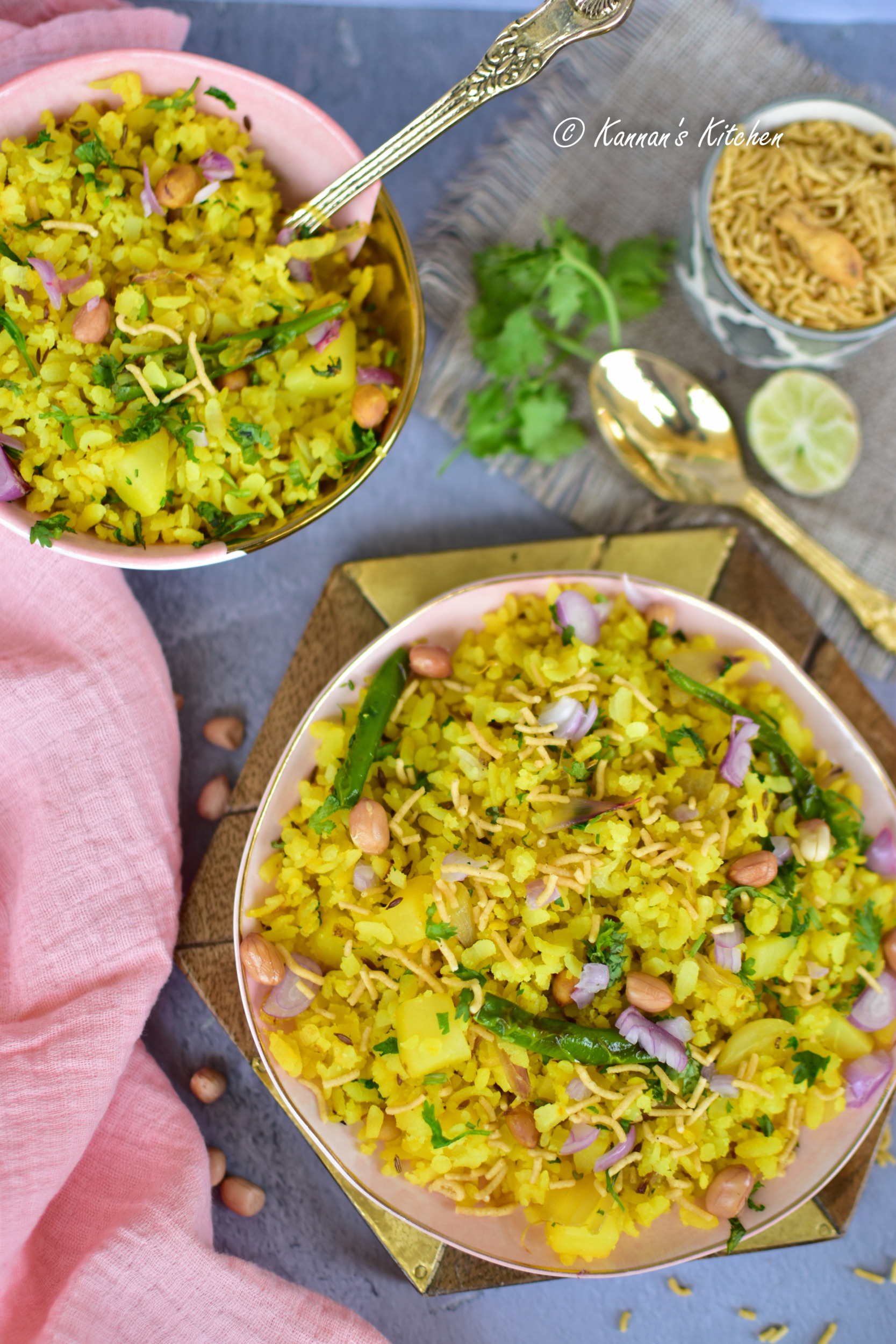
Aloo Poha also known as batata poha is a very popular breakfast dish especially in the western and central part of India. It is made using flattened rice or poha and is super easy and quick to make and light on your tummy too.
Apart from breakfasts, poha is great for evening snacks with tea or even for light dinners. Poha is a staple breakfast at our home during weekends. Also, on some lazy or tiring evenings when there is no mood or energy to cook, I and my wife resort to this quick, simple yet satisfying dish for our dinner.
There are two to three varieties of poha that are generally available in the market – the thin one which we normally use to make Chivda, then we have the thick ones which work best for making Mixture namkeen, and lastly the medium thick variety which is the one to be used for making poha. Your poha would not turn out good if you either use the thin or the too thick variety.
Poha is made by washing, soaking the flattened rice just for less than a minute. The water is drained and the poha is rested further for few minutes. It is then mixed with some salt and sugar before cooking it. Adding the salt and sugar makes it quite convenient for mixing and this is the technique normally followed in the eating joints or thelawalas who serve some of the best Pohas. It is to be noted that Poha must be light and fluffy when cooked and it should not be either mushy or dry. It must be also carefully mixed to ensure that the the flattened rice grains are not broken. Poha always tastes best when it is served piping hot, straight out of the pan.

Variations of Poha
There are quite a few variations of Poha and some of the classic ones being Kandha Poha which is made just using onions, then we have Batata or Aloo poha where potatoes are primarily used, Matar Poha where we use onions and fresh green peas and lastly you could make a veggie poha with other additions like tomato, peas, carrots etc.
Aloo or Batata Poha is one of my favourite variation of Poha not just because I love potatoes, but also for the fact that it makes it a slightly more filling meal! Is there anything that is made with potatoes and does not taste fabulous? At least I can’t think of any!
In this recipe, I have talked about Aloo poha, but if you intend to make any of the other varieties, the process is pretty much the same. So if you would like to make Kandha poha which tastes fabulous too, just add more onions instead of the potatoes. It is to be noted that the onions are not to be finely chopped for poha and it tastes best when it is roughly chopped as it has a bite to it. For matar poha, just use some boiled peas instead of potatoes in the recipe.
Some Tips for making the best Poha
Use the medium thick variety of poha for this recipe.
Wash and rinse the poha in a colander and mix salt and sugar. It is enough to rest the washed poha for 5-6 minutes and it need not be soaked in water. You could sprinkle little water if it turns dry.
Do not overcook the poha. Poha gets cooked really fast. So all it needs is cooking for 4 to 5 mins at max. The poha fluffs up well when covered and cooked for the last 2 to 3 minutes.
Always finish poha with a generous squeeze of lemon right at the end. It enhances the taste significantly.
Serving Suggestion
Poha is generally served piping hot topped with some chopped raw onions and bhujiya sev on top. The garnishing of bhujiya sev is a common practice in the states of Rajasthan and Gujarat and trust me it tastes fabulous! You could squeeze some extra lemon juice if required. A glass of hot masala tea pairs beautifully with poha.
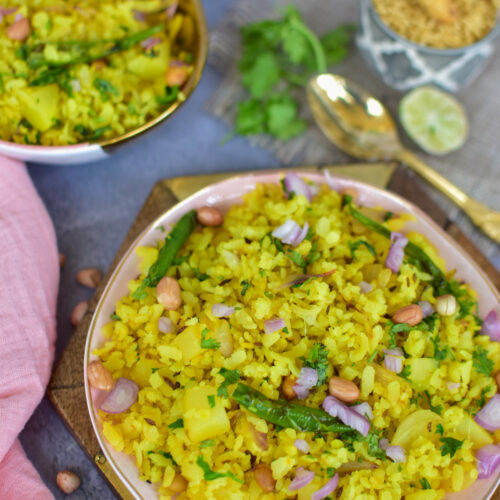
Aloo Poha
Ingredients
- 1.5 cup Flattened Rice or Poha Medium thick variety
- 1 large Potato
- 1 large Onion
- 2 Green Chillies
- 1 tsp Cumin or Jeera
- 2 tbsp Groundnuts
- ¼ tsp Asafoetida
- 2 tbsp Coriander Leaves Chopped
- Juice of half Lime
- 2 tbsp Oil
- 1 tsp Sugar
- Salt to Taste
Instructions
- Wash and peel the potatoes and chop in medium size. Boil the chopped potatoes in water along with some salt till it is just cooked. Drain the water and keep aside.
- Wash the poha once or twice and soak poha in water for just some 30 seconds and drain well using a colander. Mix sugar and salt and let it rest for 4 to 5 minutes. Sprinkle more water if poha becomes dry.
- In a pan or kadai heat 2 tablespoons of oil and add groundnuts, jeera and slit green chillies. Let the peanuts get slightly roasted. Add asafoetida.
- Now add 1 large onion which has been roughly chopped and sauté on medium flame till the onions turn pink.
- Next add the boiled potatoes and some turmeric powder. Mix well and let it cook for 1 or 2 minutes.
- Add the soaked poha and gently mix.
- Sprinkle little water and cover and cook on low to medium flame for around 2 minutes.
- Finally add some chopped fresh coriander leaves and juice of half lime. Serve hot garnished with some raw onions and bhujiya sev.
Notes
- Soak poha in water just for 30 seconds and drain in colander immediately. If you soak for long, poha could become mushy.
- Sugar is the secret ingredient here which gives that perfect balance of taste.
- Adding the salt and sugar in poha before cooking makes it easy to mix and also better absorption.
- You could also use some mustard seeds and curry leaves in the tempering if you wish.
- Sprinkle water only as required and be gentle in mixing the poha.
- Covering and cooking the poha on medium flame helps in making the poha puffy and light.
- Fresh lime juice and coriander leaves elevates the taste of the dish, so try not to avoid these ingredients.


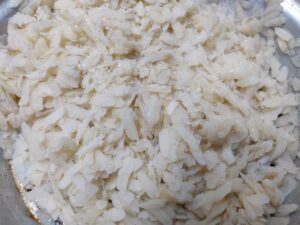
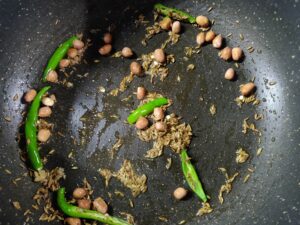
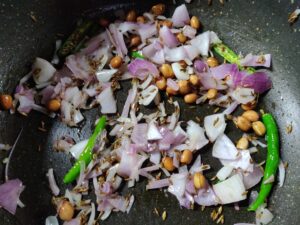
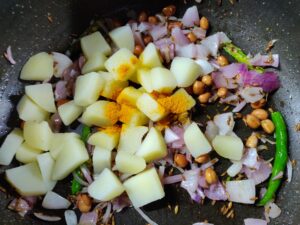
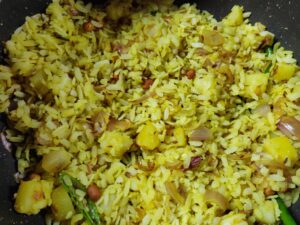
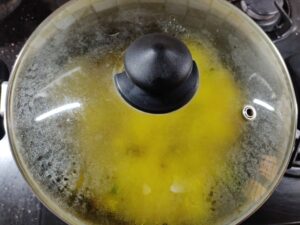
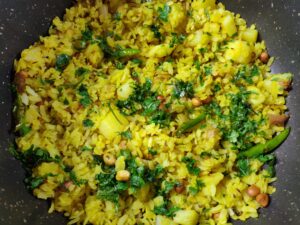
Hi Kannan,
This is my first time here. There are so many nice recipes on your blog, which I will go through regularly from now on. I often make this poha dish at home – one of my daughter’s favorites. But I have never added potatoes to it. Will certainly try this next time. Great writing, cooking and absolutely lovely photography. Thank you.
Thank you so much for your feedback 🙂